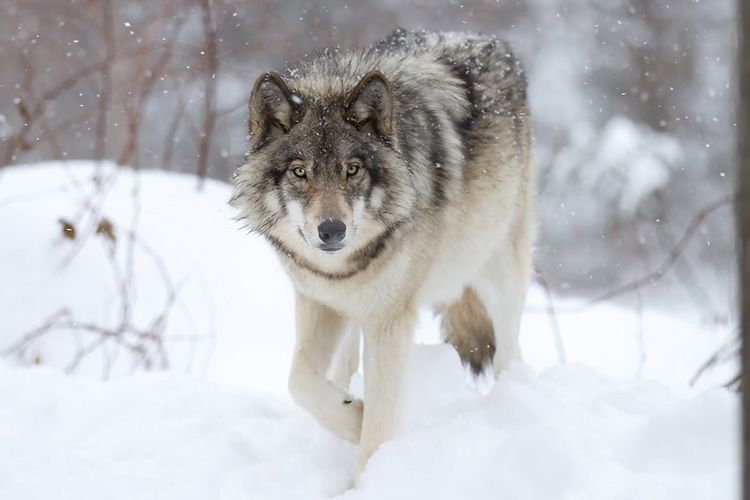
Gray wolves will be reintroduced to Colorado by the end of 2023, with the hopes that the ecosystem will flourish. photo by Jim Cumming
Colorado will be reintroducing wolves into the state by the end of 2023.
Colorado is known for its diverse wildlife that calls the Rocky Mountains home. The different ecosystems allow for many animals to coexist throughout its communities and state parks, and gray wolves were once among those animals.
Around 1940, Colorado’s wolf population was wiped out by humans in response to the constant attacks on livestock throughout the state. With the absence of wolves, the elk, deer, and coyote population dramatically decreased to a point where local ecosystems became imbalanced. As populations of animals with herbivore based diets increased, overgrazing became a main factor regarding why other species, such as smaller birds, left. Over the last couple of years, however, lone wolves have been spotted in the Rocky Mountains, coming down from Wyoming. There is still a lack of larger wolf packs, and the environment has continued to be negatively affected since, which is why Colorado has decided to make a change. In 2020, voters narrowly allowed the ballot addressing the reintroduction of wolves to pass. Many worried about wolves creating a similar problem that people faced throughout the early 1900’s while others argued that the small amounts of livestock being taken on a yearly basis wasn’t a big enough reason to endanger the Colorado ecosystem as a whole.
Along with this reasoning, the state’s plan promises to reintroduce wolves in a slow and orderly manner. Gray wolves, however, are highly social animals that tend to create orderly packs that revolve around each other. Because of this, Colorado’s Parks and Wildlife Commission must ensure that the wolves’ social needs are met in order to ensure a successful reintroduction. With larger packs of wolves comes significantly larger sources of danger for local livestock such as cattle. The good news, however, is that Colorado assured that if any livestock was lost, the owner would be generously repaid as compensation. Along with a loss of livestock, some are worried about the safety of people living in areas where wolf populations would be more established. But researchers claim that while wolves are looked at as aggressive creatures, they generally avoid humans. Not once has human death been recorded to have happened because of a gray wolf.
With the plans to reestablish Colorado’s wolf populations set in place, the Parks and Wildlife Commission needed to address the issue of where the wolves would originate. On October 6, 2023, the Oregon Department of Fish and Wildlife agreed to provide Colorado with at least 10 gray wolves over the span of the next year. Their goal is to eventually introduce 30-50 gray wolves in the span of three to five years. Oregon and Colorado will try to ensure that most of the wolves coming into the state are younger with good health. They plan to start locating the wolves in western Colorado due to the location of the Rocky Mountains. The state is hoping that after the wolves are reintroduced, deer and elk numbers will once again decrease to their healthy and natural numbers, therefore allowing native species of vegetation to bounce back across the state.
In a couple years time, gray wolves will be roaming the Rocky Mountains. Their vital role in Colorado’s ecosystems will hopefully begin to shape the state and the people living in it for years to come.